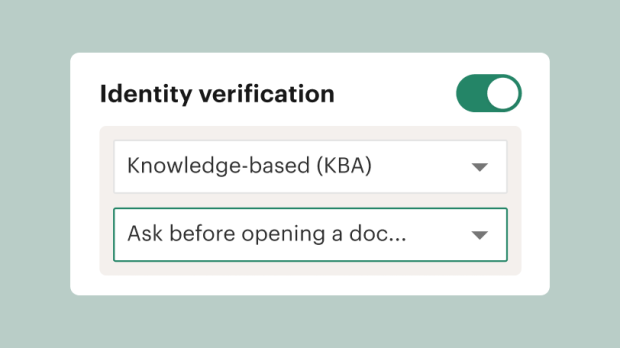
Protect documents with recipient verification
Learn how to set unique passwords, SMS codes, or KBA protocols for signers and recipients. Add an extra layer of security to sensitive documents directly from your PandaDoc workspace.
Finish your demo booking
Looks like you haven't picked a time for your personalized demo. Pick a time now.
Select date and time
Verify collaborators and signers using four distinct validation methods. Confirm identities using simple passcodes, SMS, photo identification, and more.
No credit card required




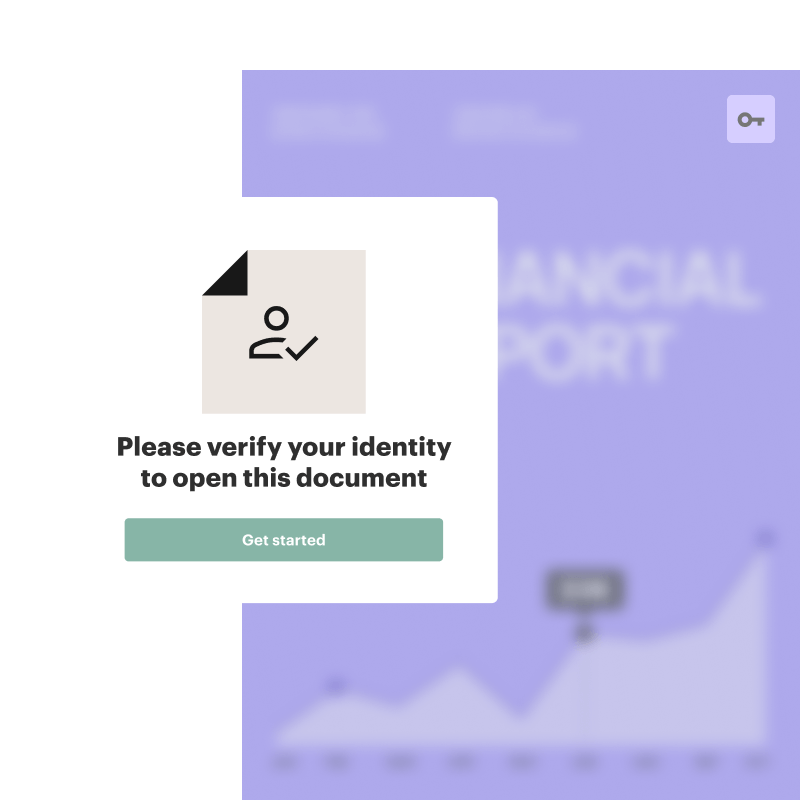
Identity verification is the process of confirming that an individual is who they claim to be.
This is essential in scenarios where an individual is requesting access to personalized services and information, or where legally binding documents like contracts and consent forms need to be signed.
Users undergoing this process may be required to provide proof of identity — such as driver’s licenses or photo IDs — in order to prevent fraud. Mobile apps can also be used to take a selfie for biometric confirmation.
The verification process varies by institution. Government agencies, financial institutions, and healthcare providers often have strict identity requirements as a means of fraud prevention.
PandaDoc offers a premium identity verification suite to help you protect sensitive information and ensure that contracts are valid and legally binding.
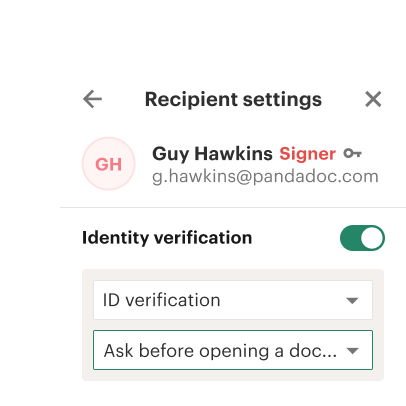
Establish identities before e-signing begins using knowledge-based authentication (KBA) and other tools.
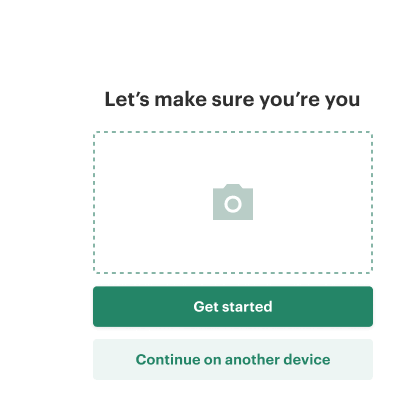
Use ID checks to prevent fraud and ensure that contracts are signed by the appropriate users.

Vary your methods to increase security for critical documents and keep validation light for known signers.
Need a fast and easy validation method? Passcode verification requires recipients to enter a pre-shared, secure passcode in order to access or sign a document. It’s an ideal solution for everyday transactions and agreements with internal partners.
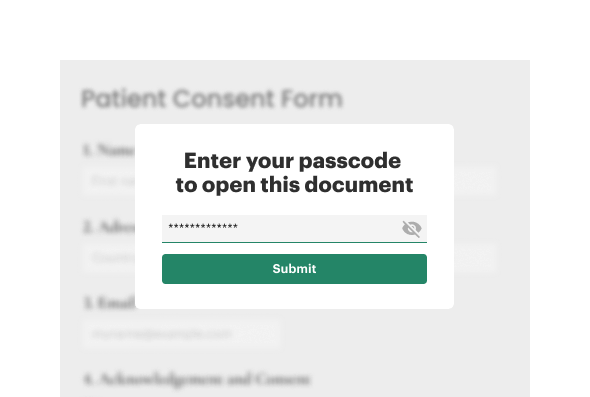
SMS verification requires users to submit a code sent via text in order to access or sign a document. This method is a common aspect of two-factor authentication and works well for mid-level security needs where mobile verification is appropriate.

Knowing your signers is essential for critical contracts and agreements. This method requires recipients to submit a government-issued ID, which is verified in real time via a biometric facial scan on a mobile app. Once an identity is confirmed, users can access, review, or sign a document.
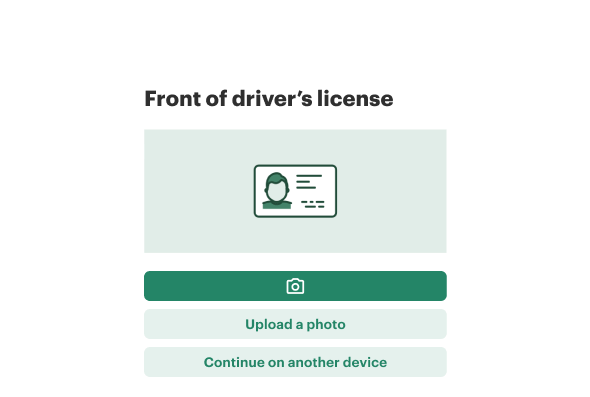
KBA verification challenges recipients to answer security questions based on personal information gathered from public records. This includes questions like previous addresses, loan information, and personal history. It’s a great choice in compliance-driven industries, offering a high level of security through an automated, behind-the-scenes process.
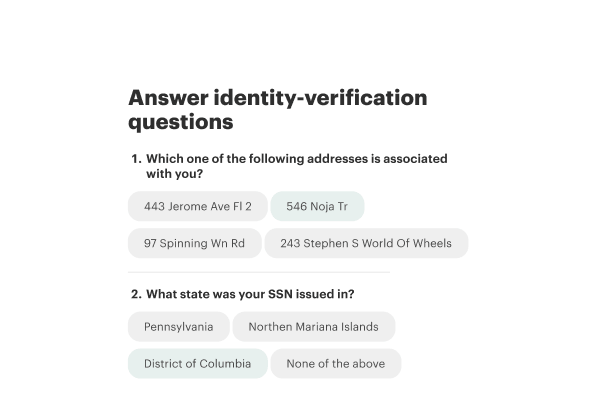

Proposals may preview an organization’s future plans or business dealings. ID verification helps to ensure that sensitive information is confidential while deals are revised and quotes are finalized.
Keep unwanted eyes out of key negotiations by ensuring that recipients are authorized to view your offers.

Some business agreements are more valuable than others. Critical documents like mortgage agreements, affidavits, or patient consent forms require specific signers and carry legal weight.
Adding an extra layer of security during the e-signing process can defend against non-repudiation and guarantee ironclad agreements.

PandaDoc’s ID verification tools fully support compliance-heavy sectors like finance, healthcare, and legal.
Combine ID verification with PandaDoc forms and onboard document preparation tools to create fast and easy signing workflows while conforming to regulatory requirements.

Employment offers, taxes, and other administrative processes often require an exchange of sensitive information between two parties.
Before asking for social security numbers, national identity documents, and other information, verify recipients with a simple passcode or SMS challenge.
This ensures that contact information is correct and that only the intended recipient can access the document.

Get personalized 1:1 demo with our product specialist.
By submitting this form, I agree that the Terms of Service and Privacy Notice will govern the use of services I receive and personal data I provide respectively.
In addition to our standard security features, PandaDoc offers four secondary verification options:
This toolkit enables teams to validate signer credentials using a wide selection of materials, including government-issued ID cards and system-generated passcodes.
Recipients will receive an ID challenge when trying to access protected documents. This prompt varies by verification method and related requirements.
PandaDoc offers RON as a user-friendly way to securely sign and notarize legally binding documents.
While RON utilizes online identity verification, the service is designed to facilitate the one-time presence of a third-party — a certified notary — who can witness the document signing process via a video call.
In contrast, the PandaDoc ID verification suite aims to secure documents and their content until recipient validity is confirmed. This process can be repeated multiple times, allowing recipients to exit and return to documents across multiple sessions.
PandaDoc offers a broad selection of verification tools to confirm a recipient’s identity.
Passcode and SMS verifications require recipients to enter a unique code (sent by email or text) before viewing a document.
Knowledge-based authentications require senders to answer.
No.
Passcodes are determined by the signer and must be communicated to senders via external means.
SMS verifications rely on a randomly generated, single-use, code sent to a recipient’s mobile number.
KBA authentications ask questions based on public records, credit reports, and similar sources. However, the process is automated. PandaDoc does not access or retain this information as part of the verification process.
ID challenges rely on third-party software solutions. Recipients will use a smartphone camera to submit an identity document, like a driver’s license or state ID. Once the document is submitted, customers verify using biometric facial recognition. PandaDoc knows that the user is verified but does not retain any identity documents or biometric information.
Please note: Because we don’t retain documents, signers will need to re-verify each time they access a document.
While PandaDoc offers ID verification methods on a global scale, some methods are only available in specific regions due to legal restrictions and regulatory requirements.
Currently, our verification suite features the following availability:
Yes! PandaDoc and its verification partners meet the necessary requirements for a wide range of regulatory requirements, including KYC, AML, and HIPAA.
However, every business process is different. If your organization requires additional verification steps that exceed standard compliance measures, talk to a member of our team to ensure that PandaDoc is a good fit.
Please note: PandaDoc offers platform-wide HIPAA compliance for Enterprise teams (BAA required).